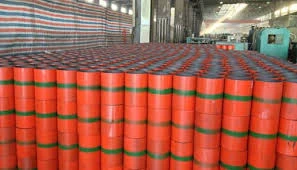- Afrikaans
- Albanian
- Amharic
- Arabic
- Armenian
- Azerbaijani
- Basque
- Belarusian
- Bengali
- Bosnian
- Bulgarian
- Catalan
- Cebuano
- Corsican
- Croatian
- Czech
- Danish
- Dutch
- English
- Esperanto
- Estonian
- Finnish
- French
- Frisian
- Galician
- Georgian
- German
- Greek
- Gujarati
- Haitian Creole
- hausa
- hawaiian
- Hebrew
- Hindi
- Miao
- Hungarian
- Icelandic
- igbo
- Indonesian
- irish
- Italian
- Japanese
- Javanese
- Kannada
- kazakh
- Khmer
- Rwandese
- Korean
- Kurdish
- Kyrgyz
- Lao
- Latin
- Latvian
- Lithuanian
- Luxembourgish
- Macedonian
- Malgashi
- Malay
- Malayalam
- Maltese
- Maori
- Marathi
- Mongolian
- Myanmar
- Nepali
- Norwegian
- Norwegian
- Occitan
- Pashto
- Persian
- Polish
- Portuguese
- Punjabi
- Romanian
- Russian
- Samoan
- Scottish Gaelic
- Serbian
- Sesotho
- Shona
- Sindhi
- Sinhala
- Slovak
- Slovenian
- Somali
- Spanish
- Sundanese
- Swahili
- Swedish
- Tagalog
- Tajik
- Tamil
- Tatar
- Telugu
- Thai
- Turkish
- Turkmen
- Ukrainian
- Urdu
- Uighur
- Uzbek
- Vietnamese
- Welsh
- Bantu
- Yiddish
- Yoruba
- Zulu
coupling tube fitting
Understanding Coupling Tube Fittings Essential Components in Fluid Connection Systems
In the fields of plumbing, HVAC, and various industrial applications, coupling tube fittings play a crucial role in ensuring efficient and reliable fluid connections. These fittings are engineered to connect two sections of tubing securely, facilitating the smooth transit of liquids or gases. In this article, we will explore the importance of coupling tube fittings, their types, applications, and selection criteria, as well as best practices for installation and maintenance.
What Are Coupling Tube Fittings?
Coupling tube fittings are specialized connectors designed to join two pieces of tubing or piping together. They are available in different designs, materials, and sizes, making them suitable for a variety of applications. Typically made from metal like brass or stainless steel, or plastic materials, coupling fittings must be durable and resistant to corrosion, especially in environments where chemicals or moisture are present.
Types of Coupling Tube Fittings
1. Compression Fittings These fittings use a compression ring to secure the tubing in place. They are ideal for applications requiring leak-proof connections and are often used in water supply and refrigerant lines.
2. Slip Fittings These are designed for easy assembly and can be adjusted or moved without the need for special tools. Slip fittings are commonly used in installations requiring frequent maintenance or adjustment.
3. Push-Fit Fittings These fittings allow for quick assembly by simply pushing the tube into the fitting. They are favored for their ease of installation and can be used with both rigid and flexible tubes.
4. Threaded Fittings With internal or external threads, these fittings screw onto the tubing to form a secure connection. They are prevalent in industrial systems where high-pressure environments exist.
5. Welded Fittings Used for permanent connections, welded fittings are typically employed in heavy-duty applications, such as industrial piping systems.
Applications of Coupling Tube Fittings
Coupling tube fittings are utilized in a myriad of applications. Some of the most common include
- Plumbing Systems In residential and commercial plumbing, coupling fittings connect pipes carrying water, ensuring reliability and efficiency.
- HVAC Systems These fittings play a significant role in heating, ventilation, and air conditioning systems, connecting refrigerant lines and maintaining optimal flow.
- Automotive Industry Coupling fittings are used to connect fuel lines, coolant systems, and other automotive fluid applications, ensuring safe and efficient operation.
coupling tube fitting

- Industrial Processes In manufacturing and processing facilities, these fittings connect tubes used in fluid transfer, chemical processing, and various other critical operations.
Selecting the Right Coupling Tube Fitting
Choosing the right coupling tube fitting is essential for system performance and longevity. Key factors to consider include
- Material Compatibility The fitting material should match the tubing and the media being transported, to prevent corrosion and ensure a secure connection.
- Pressure Rating It is crucial to select fittings that can withstand the maximum pressure within the system to prevent leaks and potential failures.
- Size and Dimensions Ensure that the fittings match the tubing size to guarantee a proper seal and connection.
- Ease of Installation Depending on the application, the ease of installation may influence the choice of fitting, especially in systems requiring frequent maintenance.
Best Practices for Installation and Maintenance
To ensure longevity and optimal performance of coupling tube fittings, proper installation and maintenance practices should be adhered to
- Clean Surfaces Before installing fittings, clean the tubing ends to remove any dirt or debris that could affect sealing.
- Follow Manufacturer Instructions Always adhere to the specific guidelines provided by the manufacturer regarding installation techniques and torque specifications.
- Regular Inspections Conduct regular inspections of the connections for signs of wear or leaks, and replace fittings when necessary.
- Use Appropriate Tools Utilize the correct tools for the installation to avoid damaging the fittings or tubing.
In conclusion, coupling tube fittings are vital components in various fluid transfer systems. By understanding their types, applications, and proper handling, professionals can ensure effective and reliable fluid management in a wide range of settings. Whether in plumbing, HVAC, automotive, or industrial processes, choosing and maintaining the right coupling fittings is essential for operational success.
-
Tubing Pup Joints: Essential Components for Oil and Gas OperationsNewsJul.10,2025
-
Pup Joints: Essential Components for Reliable Drilling OperationsNewsJul.10,2025
-
Pipe Couplings: Connecting Your World EfficientlyNewsJul.10,2025
-
Mastering Oilfield Operations with Quality Tubing and CasingNewsJul.10,2025
-
High-Quality Casing Couplings for Every NeedNewsJul.10,2025
-
Boost Your Drilling Efficiency with Premium Crossover Tools & Seating NipplesNewsJul.10,2025







